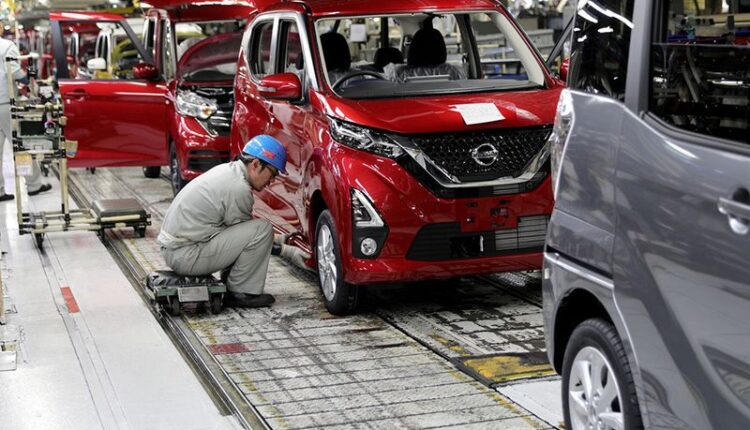That’s a well-timed achievement. Nissan projects sales in this fiscal year will increase to exactly that level — 4.4 million vehicles, a gain of 8.6 percent. If the automaker’s math is correct, that would enable it to break out of the red. In the just-ended fiscal year, its global sales were 4.1 million vehicles, a decline of 18 percent.
That sales slump handed Nissan its biggest-ever fiscal year operating loss.
“Now we can start generating profit around 4.4 million units,” COO Ashwani Gupta said while announcing Nissan’s results. “This reinforces our strategy to pull profitable growth by value.”
Nissan got there by slashing more than $3.2 billion in fixed costs, through such measures as cutting some products from its lineup, shuttering manufacturing facilities and reining in marketing spending. Nissan is reducing its global production capacity to 5.4 million vehicles under its Nissan Next midterm revival plan, and the 4.4 million breakeven point reinforces the rebound.
Nissan also is getting a lift as it enters a rollout period for new product, such as the redesigned Rogue crossover. That helps Nissan command higher prices and boost revenue per vehicle.
Drilling down on cost is a corporate ritual for Japanese automakers steeped in a kaizen mindset. The strategy of knocking down costs to generate profits during a slump was driven home during the Great Recession. But the pandemic and global microchip shortage has resparked the need to get leaner, and the new efforts could make Japan’s automakers more resilient when the next crisis hits.
The immediate outlook isn’t exactly rosy. Fitch Ratings on Tuesday, May 18, released a forecast that predicted the semiconductor crunch will cost auto manufacturers a combined 3.8 million units of lost sales in 2021, further pressuring automaker profits.
In Japan’s May earnings announcements, even automakers that didn’t quantify their breakeven targets made sure to hype their cost-reduction efforts. Honda Motor Co. said it cut fixed costs by about ¥200 billion ($1.8 billion) in the fiscal year that ended March 31.
During its earnings report, Toyota Motor Corp. said it chopped its breakeven sales volume by 2 million vehicles since the Great Recession. And in the fiscal year that ended March 31, as Toyota coped with the pandemic downturn, it managed to lower its breakeven point by several hundred thousand vehicles.
“We will continue to improve our total cost,” CFO Kenta Kon said. “In the future, we would like to reduce the breakeven unit even further, to create additional resources for investment.”
Long term, Kon said, Toyota wants to keep lowering the breakeven point by focusing on the entire value chain. It also will seek greater efficiencies in replacement parts, accessories, used vehicles and software updates. By eking every last bit of margin, Toyota is focused not only on staying in the black but on lifting profits. In the current business year, the company plans to pump a record ¥1.16 trillion ($10.5 billion) into R&D, largely to support its electrification push.
Toyota did not say what its current breakeven sales volume is. But at last year’s retail sales rate of 9.9 million vehicles, Toyota booked a robust operating profit margin of 8.1 percent.
Even Mazda Motor Corp., which is in the middle of a restructuring plan, sees the road to success through a better breakeven point. Mazda has steadily whittled its number, from 1.136 million vehicles in its fiscal year ended March 2020 to 1.015 million in the fiscal year ended this March. In the current fiscal year, Mazda aims to dial it down to 1 million.
Mazda is known for squeezing inefficiencies out of its ultra-lean manufacturing processes. But the automaker now sees room to trim fat in softer targets. In advertising, Mazda has shifted to more cost-effective digital messaging. And in R&D, Mazda is improving margins by relying on computerized model-based development, a kind of virtual engineering that cuts both time and cost from the process.


